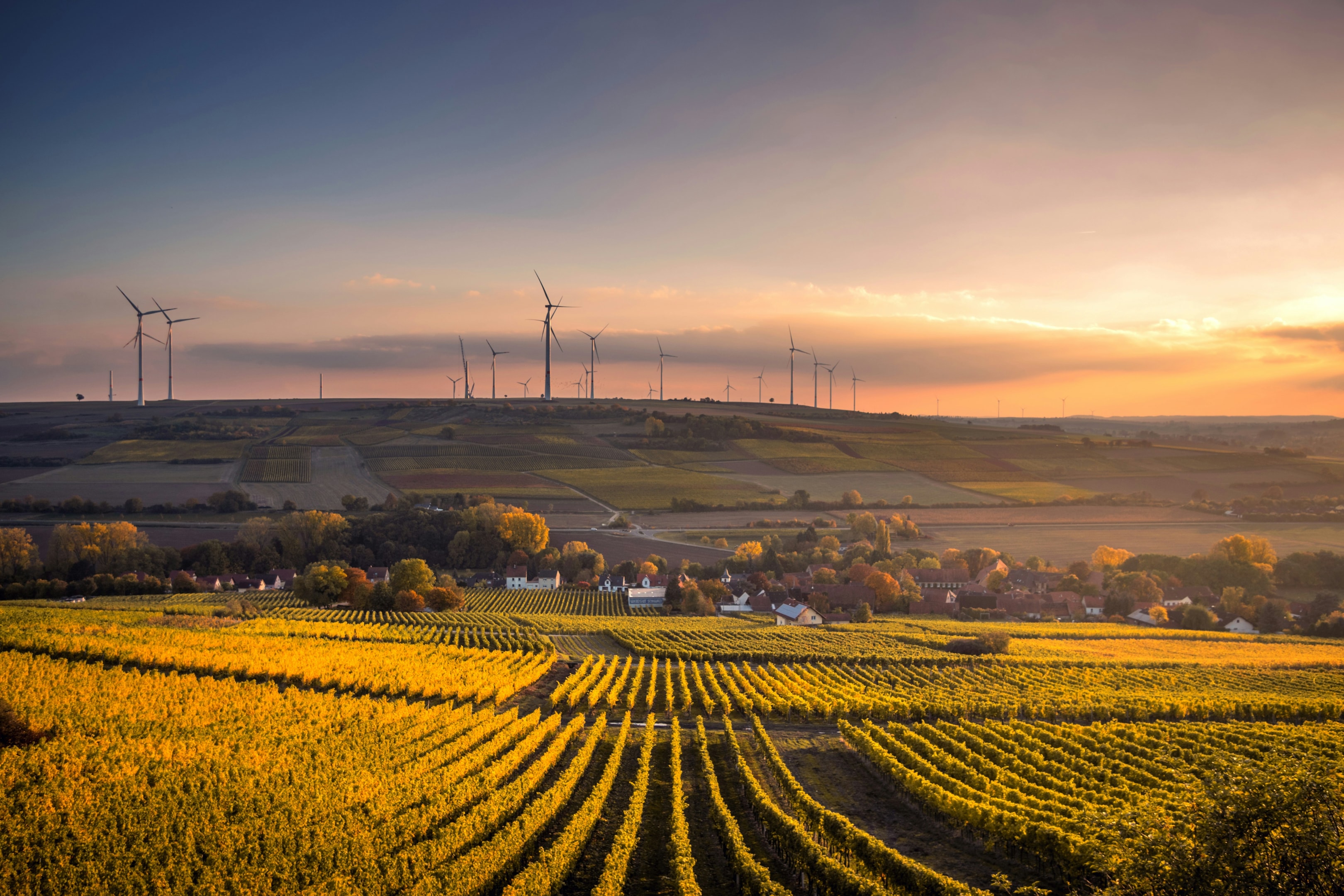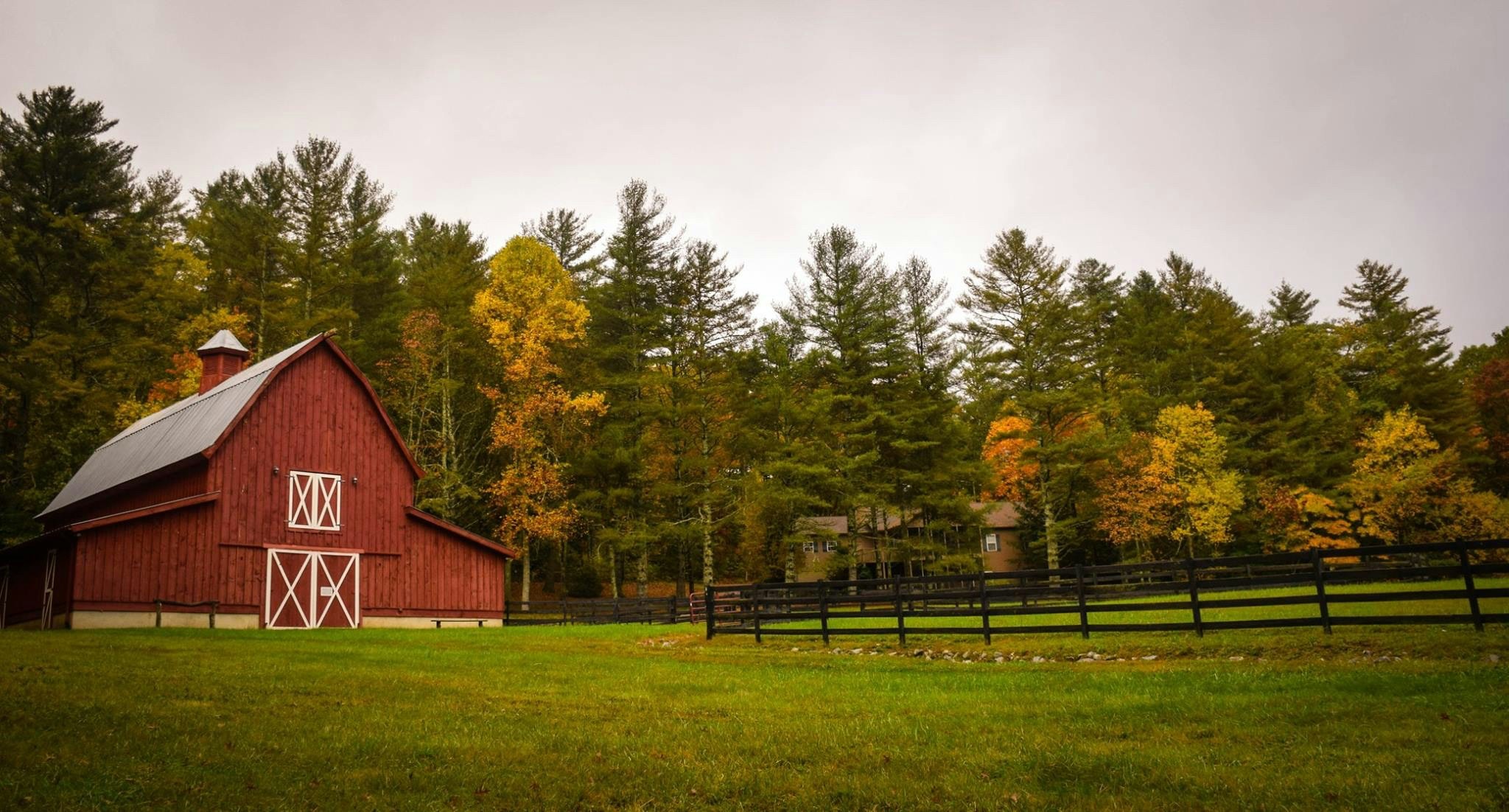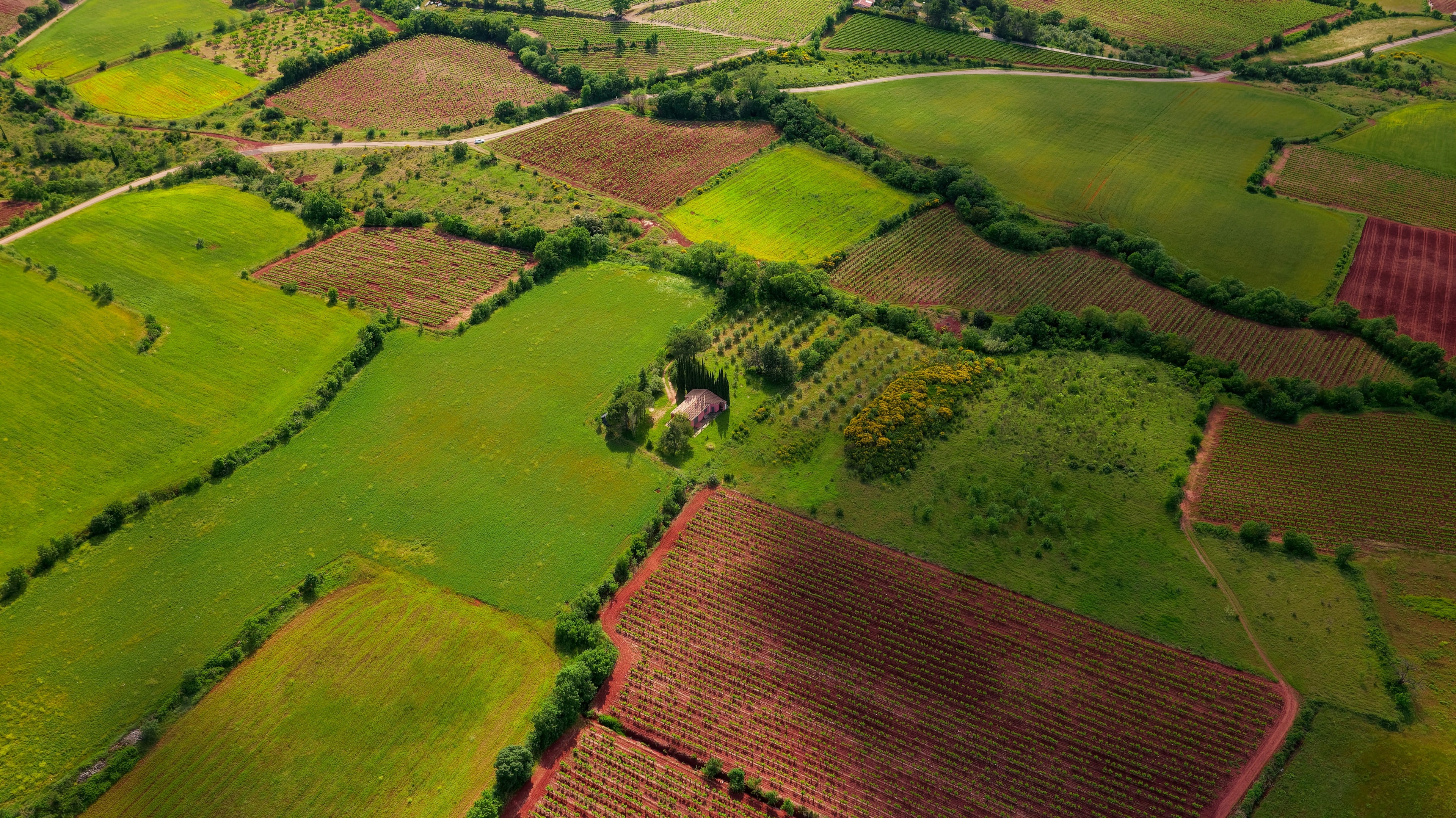The Essential Guide to Smart Investing in Farmland for Beginners
Introduction
In a world where investors often chase the latest trends—be it stocks, cryptocurrencies, or tech startups—farmland quietly stands out by delivering stability, growth, and passive income. Between 1992 and 2022, U.S. farmland achieved an impressive annual return of 10.74%, surpassing the S&P 500 in several years and maintaining its value through economic downturns. As inflation rises and markets fluctuate, more investors are turning to farmland as a tangible, inflation-resistant asset that generates steady income. This makes investing in farmland one of the smartest financial decisions, offering reliable returns and protection against economic uncertainty.

Understanding Farmland as an Asset
Farmland is more than just soil—it's a productive, income-generating real estate asset influenced by factors like soil fertility, crop yield potential, water rights, and market access. Unique among asset classes, farmland combines intrinsic value as a finite resource with productive value from agriculture, offering investors both steady income and long-term appreciation, making it a rare hybrid asset.
The Growing Popularity of Farmland Investments
Farmland, once reserved for farmers and large institutions, is now accessible to everyday investors through technological platforms and REITs. Major players like Bill Gates, TIAA, and UBS Farmland Investors have acquired millions of acres, recognizing farmland's resilience and steady growth despite stock market fluctuations. Globally, increasing populations, limited arable land, and rising food demand make farmland a defensive, recession-resistant investment opportunity attracting a diverse range of investors.
Key Benefits of Investing in Farmland
1. Consistent Cash Flow
Most farmland generates predictable income through lease agreements or crop-sharing contracts. For example, in the Midwest, farmers often pay a fixed annual rent per acre, providing investors with reliable passive income streams. This rental income remains strong even during market downturns because people always need to eat, ensuring consistent demand and steady revenue for farmland investors.
2. A Natural Hedge Against Inflation
Inflation erodes purchasing power—but farmland thrives under it. As prices of goods rise, agricultural commodities and land values typically follow suit. Farmland is widely recognized for its inflation protection, as both its value and income tend to rise with the general price level. During the inflationary 1970s, farmland values in the U.S. rose over 400%, outperforming gold and Treasury bonds.
3. Portfolio Diversification
Farmland's performance has virtually no correlation with the stock or bond markets. Adding even a small allocation (5–10%) to farmland can stabilize overall portfolio returns and lower volatility. Investing in farmland can also provide diversified exposure across various crops, regions, and management strategies, further enhancing risk mitigation. If you're interested in learning more ways to expand your portfolio beyond farmland, see Essential Guide on How to Build a Real Estate Portfolio Successfully.
4. Long-Term Capital Appreciation
Unlike buildings or machinery, farmland doesn't depreciate—it often improves in value with proper management. Farmland has historically demonstrated steady appreciation, making it a reliable long-term investment. From 2000 to 2022, the average acre of U.S. farmland increased from $1,150 to over $3,800, driven by population growth, land scarcity, and technological advances in agriculture.
Types of Farmland Investments
Direct Ownership
Buying farmland outright offers maximum control and flexibility, allowing you to lease the property, hire operators, or manage the farm yourself. Investors who choose to buy farmland benefit from direct investment in a tangible asset with potential for both income and appreciation; however, this approach requires significant capital, agricultural knowledge, and ongoing management. Commonly, investors purchase row crop farms (such as corn, soybeans, and wheat) or permanent crop farms (including nuts, fruits, and wine grapes), depending on their investment horizon. Purchasing farmland demands careful evaluation of property characteristics and market conditions to ensure a sound investment.

Farmland REITs
Farmland REITs, including publicly traded options such as Farmland Partners Inc. (FPI) and Gladstone Land Corporation (LAND), allow investors to buy shares in professionally managed farmland portfolios. Investing in a farmland REIT enables individuals to gain exposure to farmland assets without direct ownership, benefiting from professional management and liquidity. These REITs pay regular dividends, providing an easy entry point for investors seeking passive exposure without buying land directly.
Crowdfunding Platforms
Innovative platforms like AcreTrader, FarmTogether, and Harvest Returns enable fractional ownership. With as little as $10,000–$20,000, investors can diversify across multiple farms and crops—something previously possible only for large-scale operators.
Farm Syndications and Partnerships
In a syndication, multiple investors pool funds to purchase and operate farmland collectively. Some syndications also involve leasing land from third party landlords, providing additional flexibility and access to high-quality properties. This allows for larger-scale investments and professional management, often combining real estate expertise with agricultural know-how.
How Farmland Generates Income
1. Crop Production Income
Farmers grow and sell crops, and investors receive a portion of profits based on agreements. Crop-share leases, where both parties share expenses and revenues, are common in many regions. Choosing the right crops for a given region and soil type is essential for optimizing farm income and investment returns.
2. Rental and Lease Agreements
Fixed cash leases provide steady, predictable income. Cash rent agreements are common in farmland investing, offering predictable income regardless of crop performance. For example, a farmer might pay $250 per acre annually to use your land, generating consistent revenue regardless of crop yields. Cash rents have historically contributed to the steady income profile of farmland investments.
3. Government Subsidies and Incentives
Many farmland investors benefit from U.S. Department of Agriculture (USDA) subsidies, conservation programs, and carbon credit incentives for sustainable practices—adding additional income sources.
Evaluating Farmland Value
Before buying, investors must assess factors that directly impact productivity and long-term value. Conducting rigorous due diligence is essential when evaluating farmland investments to ensure credibility and quality. Key considerations include location, such as proximity to markets, mills, and transportation routes; soil quality, focusing on high fertility and good drainage to support strong yields; reliable water access, including irrigation and water rights, especially in drought-prone regions; crop history by reviewing the track record of an existing farm to gain insights into future profitability; and climate stability, taking into account weather patterns, frost risk, and rainfall consistency. To make informed decisions, it is highly recommended to work with local farm managers or agricultural appraisers who understand soil ratings and market conditions before finalizing a deal.
Risks of Farmland Investing
Farming is inherently risky due to unpredictable weather, market volatility, and changing economic conditions. Key risks include natural disasters like droughts and floods, commodity price fluctuations, regulatory changes, operational challenges, and factors such as tenant reliability and local infrastructure. To mitigate these risks, investors should diversify across regions, crops, and lease types, and consider crop insurance for added protection.
Farmland vs. Other Real Estate Investments
Farmland differs from traditional real estate in key ways: Unlike traditional investments such as stocks and bonds, farmland offers unique benefits including low correlation with financial markets and strong inflation resistance. Compared to residential or commercial real estate, farmland typically has lower maintenance costs and experiences rare tenant turnover, which reduces management hassles. It also shows strong resistance to inflation and minimal depreciation, making it a durable asset. Additionally, its value has a low correlation with broader financial markets, providing investors with a stable and reliable investment option that can enhance portfolio diversification. Farmland's performance and risk profile differ significantly from other asset classes and investments, making it a valuable addition to diversified portfolios by offering durability and long-term stability without the hassle of tenant management or structural repairs.

Farmland as a Hedge Against Inflation
Few assets protect purchasing power like farmland. As inflation rises, both land values and crop revenues tend to increase. Unlike fiat currencies that can lose value, land is finite—and as populations grow, its demand only rises. Data from the USDA shows that over the last 50 years, U.S. farmland has appreciated at an average annual rate of 6.2%, making it one of the most consistent inflation hedges available. According to the NCREIF Farmland Index, U.S. farmland has delivered a strong average annual total return over multiple decades, outperforming many other asset classes.
How to Start Investing in Farmland
Step 1: Educate Yourself
Learn about different types of farmland (row crops, permanent crops, pastureland) and their return profiles, and also understand the dynamics of the broader farming sector and its impact on investment returns.
Step 2: Decide Between Active or Passive Ownership
If you prefer hands-off investing, choose REITs or crowdfunding platforms. Active investors may explore direct ownership or syndications, where active management involves hands-on oversight of farm operations to maximize returns.
Step 3: Conduct Due Diligence
Review soil maps, water rights, zoning laws, legal title, and lease agreements. Visit the property if possible.
Step 4: Explore Financing
Some lenders specialize in farmland loans, including Farm Credit Services and USDA-backed programs. Traditionally, high upfront costs have limited access to farmland investments, but new financing options are making it more accessible. If you are looking to learn more about creative ways to finance your investment, see Creative Financing for Real Estate Investors: Top Tips to Save Money.
Step 5: Start Small
Begin with fractional investments or smaller tracts before expanding your portfolio. Mutual funds focused on agriculture can also provide an easy entry point for new investors, offering exposure to agriculture-related firms and commodities with the added benefits of diversification and professional management.
Tax Benefits and Government Incentives
Owning farmland offers several tax advantages that make it both profitable and tax-efficient. Many states provide property tax reductions for agricultural use, and investors can benefit from depreciation deductions on improvements like irrigation systems. Conservation programs offer additional deductions for maintaining wetlands or buffer zones, while favorable inheritance tax treatment often applies to farmland ownership, enhancing estate planning strategies.
Farmland Investment Strategies
Buy and Hold
Purchase high-quality farmland and lease it out for consistent income and appreciation—this buy and hold approach is one of the most common forms of direct farmland investments. By holding the land over a long period, investors can benefit from steady rental income while also capturing capital appreciation as land values increase due to factors like population growth and limited supply.
Value-Add Approach
Improve land with irrigation systems, drainage, or soil enhancements to increase yields and market value; professional land management can further enhance productivity and long-term value. These improvements not only boost crop production but also make the property more attractive to tenants or future buyers, potentially increasing both cash flow and resale price.
Lease-to-Own
A hybrid model allowing investors to earn rent—typically through lease-to-own arrangements where tenants pay rent during the lease period, with the option to purchase the land later—while maintaining the potential for long-term equity growth. This approach provides flexibility for both investors and farmers, aligning incentives for land care and offering a pathway to ownership for tenants.
Passive Investing
Use REITs or crowdfunding platforms to enjoy farmland returns without operational responsibilities. Alternatively, custom farming arrangements allow landowners to hire professionals to manage operations while retaining control over crop choices. Passive investing is ideal for those who want exposure to farmland's benefits without the complexities of day-to-day farm management.
Top States for Farmland Investment
United States
Iowa & Illinois: Top performers for corn and soybean production.
California: Premium fruit, vegetable, and nut farmland (though higher costs).
Nebraska & Kansas: Ideal for irrigated and dryland crops.
Washington & Oregon: Fruit, hops, and wine-producing regions with strong export markets.
Future Outlook for Farmland Investments
The next few decades look promising for farmland investors, with a projected 70% increase in global food demand by 2050 and shrinking farmland availability due to urbanization, causing demand to likely outpace supply. Technological advances such as precision agriculture, AI-based crop analytics, and drone irrigation systems are improving farm efficiency and profitability, while better farm management practices will maximize productivity and capital returns. Farmland investment is not just about owning land but securing a stake in the planet's food future, offering low volatility and resilience during economic downturns, making it an attractive option for long-term investors.

Conclusion
Farmland represents a rare mix of stability, income, and sustainability. While other markets rise and fall with sentiment, farmland quietly grows value over time—rooted in the most basic human need: food. Many experts consider farmland a good investment due to its historical performance and resilience. Whether you're a first-time investor exploring farmland REITs or a seasoned real estate professional seeking diversification, investing in farmland offers a grounded, profitable path to long-term wealth. Those looking to invest in farmland can benefit from the unique advantages of this agricultural investment, as the old saying goes: "Buy land—they're not making any more of it."